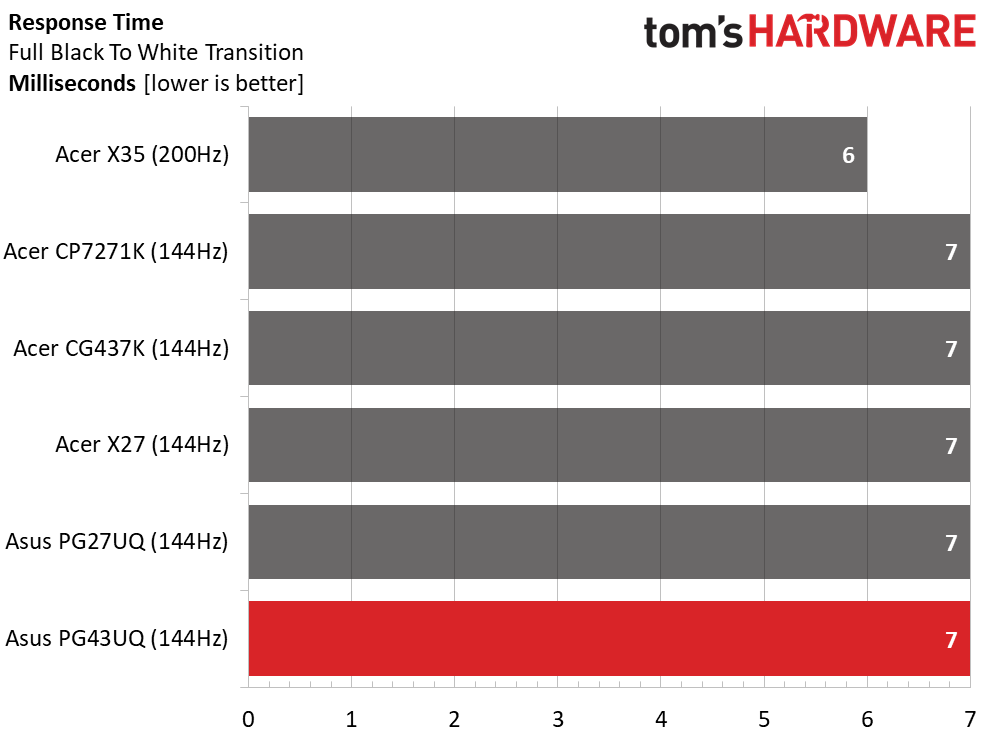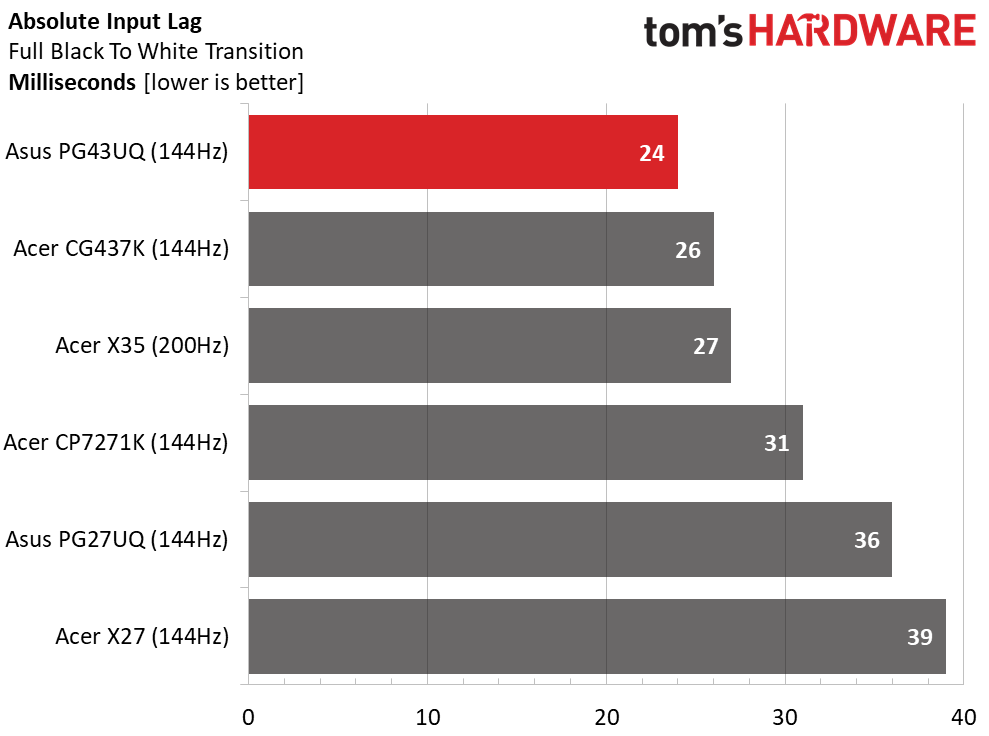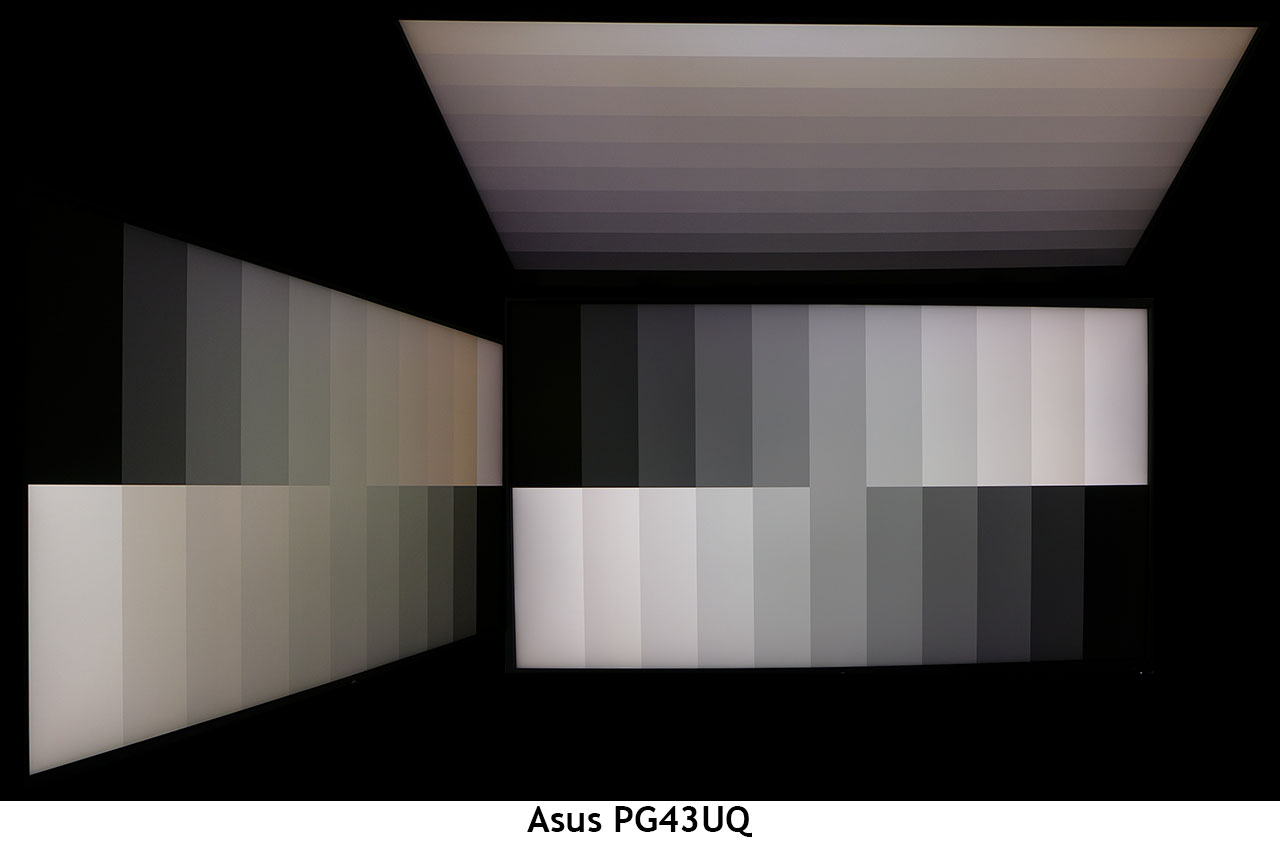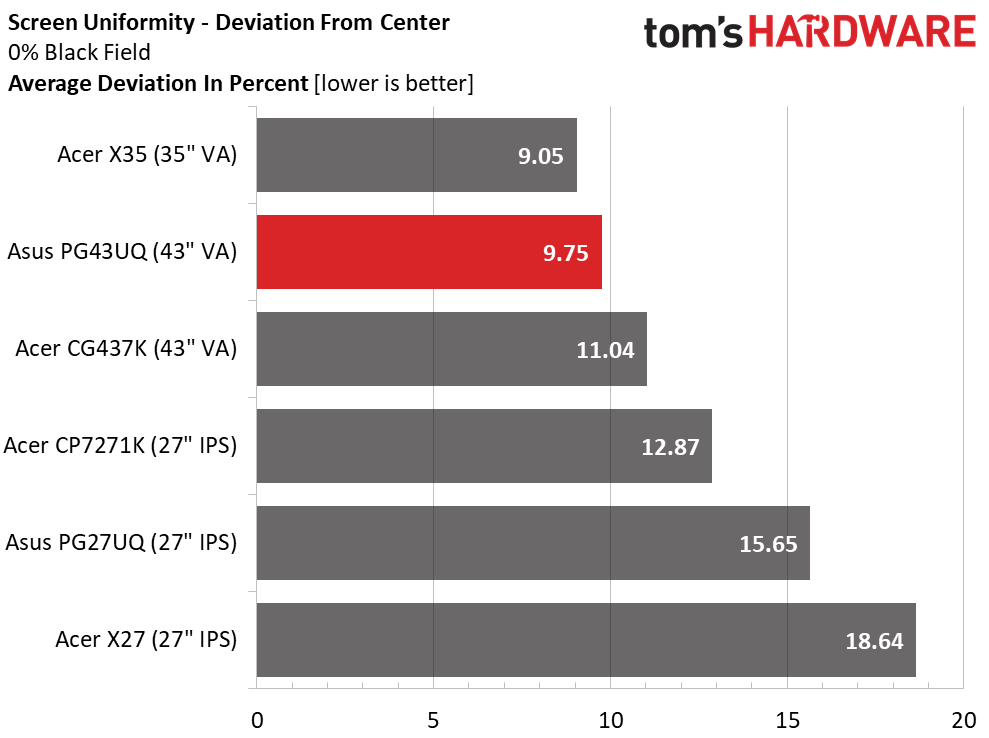Why you can trust Tom's Hardware
Viewing Angles
VA screens don’t quite have the off-axis image quality of IPS panels. But a 43-incher like the PG43UQ is still perfectly shareable. At 45 degrees to the side, we could see a red-green shift with a 30% drop in brightness. A top view reduces brightness by 50% with a red shift and a reduction in detail. Still, with so much screen real estate available, three users could easily share the PG43UQ when sitting 5-6 feet away.
Screen Uniformity
To learn how we measure screen uniformity, click here.
Our PG43UQ sample showed no visible uniformity issues. There was no bleed or glow, and our meter only detected a slight hot spot in the lower left zone. Field patterns at all brightness levels were smoothly toned from edge to edge and showed no color variation.
Pixel Response and Input Lag
Click here to read up on our pixel response and input lag testing procedures.


We set the PG43UQ’s overdrive on level 3 for this test, as higher settings produced obvious ghosting artifacts. Tested at 144 Hz, the PG43UQ posted the same screen draw interval as its competition. The 200 Hz X35 will buy you 1 less millisecond.
Total input lag is extremely impressive at just 24ms, which beats the X35 by a hair. Asus touts its GameFast technology as having lower input lag than the competition, and our test confirmed that. This is one quick monitor that provided a level of response we’ve only seen exceeded by 1080p 240 Hz models.
MORE: Best Gaming Monitors
Get Tom's Hardware's best news and in-depth reviews, straight to your inbox.
MORE: How We Test Monitors
MORE: All Monitor Content
Current page: Viewing Angles, Uniformity, Response and Lag
Prev Page HDR Performance Next Page Conclusion
Christian Eberle is a Contributing Editor for Tom's Hardware US. He's a veteran reviewer of A/V equipment, specializing in monitors. Christian began his obsession with tech when he built his first PC in 1991, a 286 running DOS 3.0 at a blazing 12MHz. In 2006, he undertook training from the Imaging Science Foundation in video calibration and testing and thus started a passion for precise imaging that persists to this day. He is also a professional musician with a degree from the New England Conservatory as a classical bassoonist which he used to good effect as a performer with the West Point Army Band from 1987 to 2013. He enjoys watching movies and listening to high-end audio in his custom-built home theater and can be seen riding trails near his home on a race-ready ICE VTX recumbent trike. Christian enjoys the endless summer in Florida where he lives with his wife and Chihuahua and plays with orchestras around the state.
-
PapaCrazy Extremely tempting but price needs to go (way) down and GPU power up for such awesomeness to be readily adopted.Reply -
uwhusky1991 Seems that TV manufacturers are missing an opportunity. TCL sells a 43" 4k tv for about $200. You can't tell me that it costs 9X more to make a 144hz 43" tv. Asus sells it for that much because there aren't any mainstream options. TV companies see the 43" TV size as a low end product whereas it's a high end price point for PCs.Reply -
Tanquen VA / W-LED, edge array for $1500 when TVs of this size can be had for $300-$400?Reply
You can get the XG438Q now for like $1000 why get this? -
shemsureshot Looks awesome and probably something I would have bought had I not recently purchased the LG CX 48 inch TV as a gaming display. As someone who uses a large display with my pc I would say the size isn’t much of an issue and after a while even the 48” screen stops looking too big. I’m currently looking for a good deal on a lap board for the keyboard and mouse, there aren’t too many on the market at the moment even though these large displays are creating a need for them.Reply -
CliveStaples How do you think this monitor might be better than your CX? I thought the CX was a shoo-in for best gaming display with with the OLED screen, g-sync, 120hz, but I would love to understand where this Asus monitor compares favorably.Reply -
hermanbaggins I do alot of drone racing. Its critical to have a fast video feed from our drones to our goggles otherwise we wont have enough time to react and crash into everything. We deal in millaseconds delays also. With that said 1ms response time vs previous version of this monitor 4ms you will tell the difference when gaming. Im not sure if there is any monitor this size with these stats with freestink.Reply

